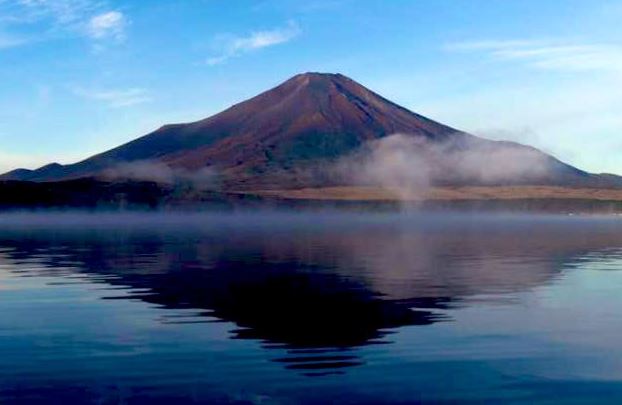For the first time in over a century, Japan’s iconic Mount Fuji has yet to receive its seasonal snowcap, which typically forms around early October. As of November, the summit of this UNESCO World Heritage site remains bare, a phenomenon meteorological officials attribute to unusually warm temperatures in recent weeks.
Meteorological data reveals that this snowless November breaks the previous record set in 2016 when snow last appeared on October 26. Traditionally, snow begins to sprinkle on the 3,776-meter (nearly 12,300-foot) mountain by early October, marking the end of the summer hiking season. Last year, the first snowfall was observed on October 5, according to the Japan Meteorological Agency (JMA).
Mount Fuji’s bare summit has sparked widespread attention on social media, with many sharing photos of the snowless peak. Some users expressed surprise, while others voiced concern over the possible link to climate change.
The JMA’s Kofu Local Meteorological Office, which has been recording snowfall on Mount Fuji since 1894, reported that October’s average summit temperature was unusually warm, reaching 1.6 degrees Celsius (34.9 Fahrenheit) — a record high since 1932. The mountain typically experiences an average October temperature of minus 2 degrees Celsius (28.4 Fahrenheit).
Japan has faced a particularly hot summer and a warm autumn this year, intensifying concerns about changing weather patterns and their impact on cherished landmarks. The iconic “Fujisan” has long been a symbol of Japan, inspiring art and culture for centuries. Its near-perfect slopes and snowcap have featured in countless works, including Katsushika Hokusai’s famed Thirty-six Views of Mount Fuji.
While Mount Fuji remains a popular destination for hikers seeking the famed sunrise at its summit, the influx of visitors has raised environmental concerns. Issues such as littering and overcrowding have led to calls for stronger conservation efforts and better management of tourism.
As Japan experiences increasingly unpredictable weather, the absence of snow on Mount Fuji highlights the broader environmental shifts affecting natural landmarks worldwide.
Key Points: Mount Fuji Remains Snowless in November for First Time in 130 Years
- Historical First: For the first time in 130 years, Mount Fuji remains without its typical November snowcap, marking a significant deviation from usual weather patterns.
- Temperature Anomaly: October’s average temperature at the summit reached 1.6°C (34.9°F), the highest recorded since 1932, compared to the usual -2°C (28.4°F) for this time of year.
- Climate Concerns: Meteorological officials attribute the snow delay to unusually warm autumn weather, raising public concerns about the impact of climate change on Japan’s natural landmarks.
- Social Media Response: The bare summit of Mount Fuji has sparked extensive attention on social media, with posts ranging from surprise to concern over environmental shifts.
- Cultural Significance: Known as “Fujisan,” Mount Fuji is a national symbol and has inspired various forms of Japanese art and culture, including the renowned Thirty-six Views of Mount Fuji by Katsushika Hokusai.
- Tourism and Environmental Impact: Mount Fuji is a major tourist destination, but the surge in visitors has led to issues such as litter and overcrowding, prompting calls for enhanced conservation efforts.
- Broader Environmental Shift: The unprecedented lack of snow on Mount Fuji underscores the broader challenges posed by climate change on natural landmarks worldwide.



